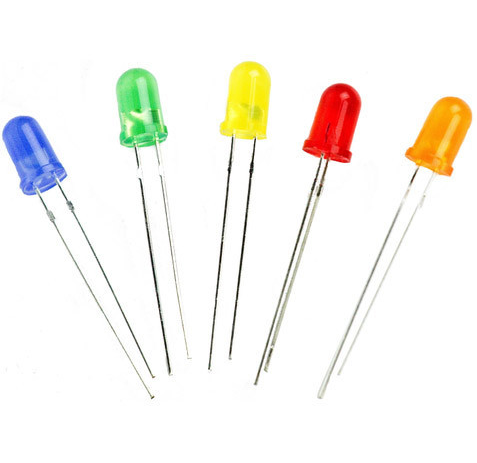It would seem like just yesterday that LED technology was introduced, but it’s been around for many years. Many homeowners and business owners have installed the technology, whether it’s for home appliances or industrial high bay lights.
4 Kinds of LED Chip Technology
Since LED technology is used in various applications, LED manufacturers have developed four kinds of LED chips that meet a product’s needs. What are the four types of LED chips manufacturers use in their products?
- LED COB or Chip on Board
- LED DIP or Dual In-Line Package
- LED SMD or Surface Mounted Diode
- MicroLED
LED Chip on Board (COB)
The latest LED lighting advancement is the LED Chip on Board technology. Its design is centered on the product’s presence of multiple LED diodes. As such, manufacturing costs for the technology runs about 20% less than what SMD chips cost.

- Small devices, like cameras or cell phones, tend to use this technology because of the high amount of lumens using very little energy they produce. They provide a light output of more than 120 lumens per watt.
- Thanks to its design, heat is efficiently dissipated, allowing for use for long periods of time, despite how much light output is provided.
COB technology is extremely durable because it can tolerate electrical current-voltage changes.
Finally, it emits a multi-directional light, meaning it has a beam angle of roughly 160 degrees.
LED Dual in-Line Package (DIP)
When people think of LEDs, they tend to think about Dual IN-Line Package LEDs. The design comprises a diode encased in a tough opaque plastic case with two parallel connector pins sticking out. The casing’s color determines the LED light.

While many DIP chips are still in use, they have a low luminous efficiency, unlike the currently available LEDs. Therefore, they are commonly used as indicator lights for various electronics.
LED Surface Mounted Diode
The diode of the Surface Mounted Diode (SMD) is enveloped in a semi-rigid resin soldered to the circuit. SMDs are smaller in size than DIP chips and much more effective. SMD development is seen as an advancement in LED technology, as it introduces three diodes on one chip. White light is only achievable by combining the three main colors – green, blue and red. The combination means approximately 16 million different colors are possible.
Another way to attain the white light is to apply a coating of phosphor layer that will absorb the blue light so that the yellow color is given off. The layer’s density dictates the SMD chip’s color temperature. Lepro high bay lights are designed with SMD2835 LED Chips, which can reach 145lm/W light efficacy.

When it comes to features and performance, here are a few things to be mindful of:
- The chips can generate up to 80 lumens per watt, which is much higher than other DIPs. As such, many LED strips and downlights use them.
- It generates a unidirectional light, but since they are distributed over the light fitting’s whole surface, you can still get a 360-degree angle beam.
- Thanks to its 80% Color Rendering Index feature, it offers true color reproduction.
SMDs do have one particular shortcoming, and this is the chip-to-board connection temperature. It’s just not ideal for long-term use.
MicroLED Chip
MicroLED technology is the result of various microscopic LEDs to define pixels. It’s the technology used in flat panel TVs because it offers higher energy efficiency, better contrast and lower response time.

And LED technology goes beyond lighting, including products like cell phones, gadgets and TVs.


